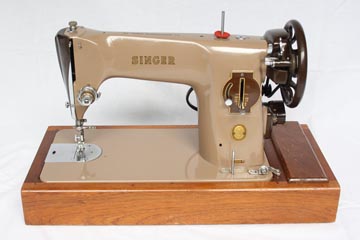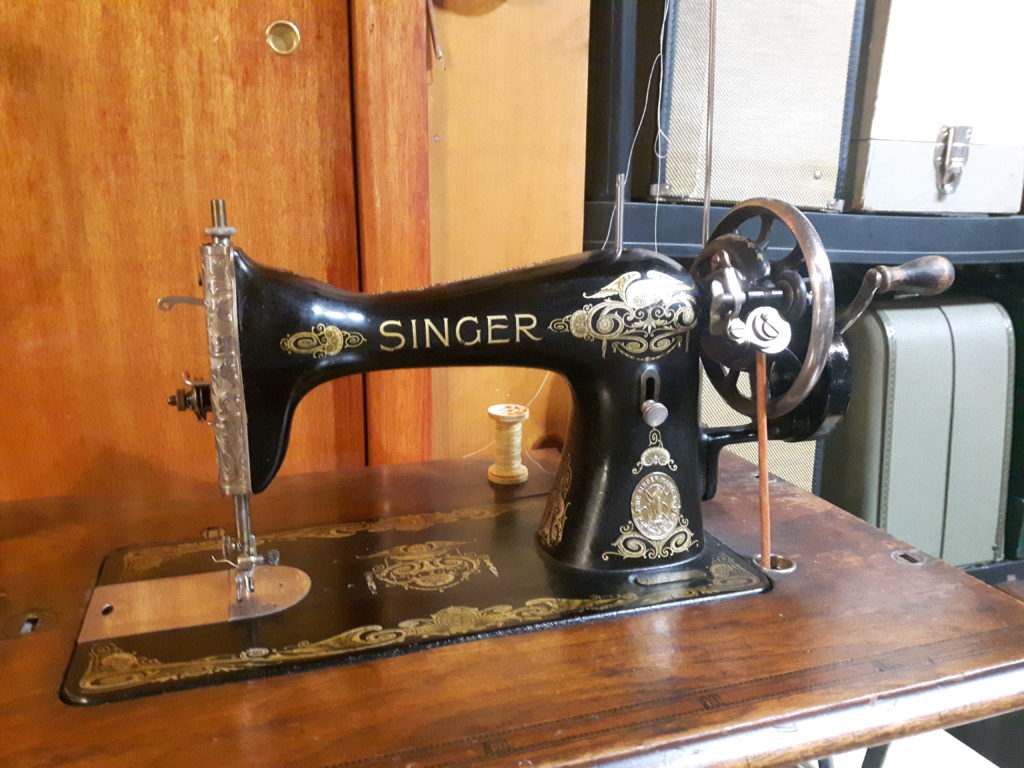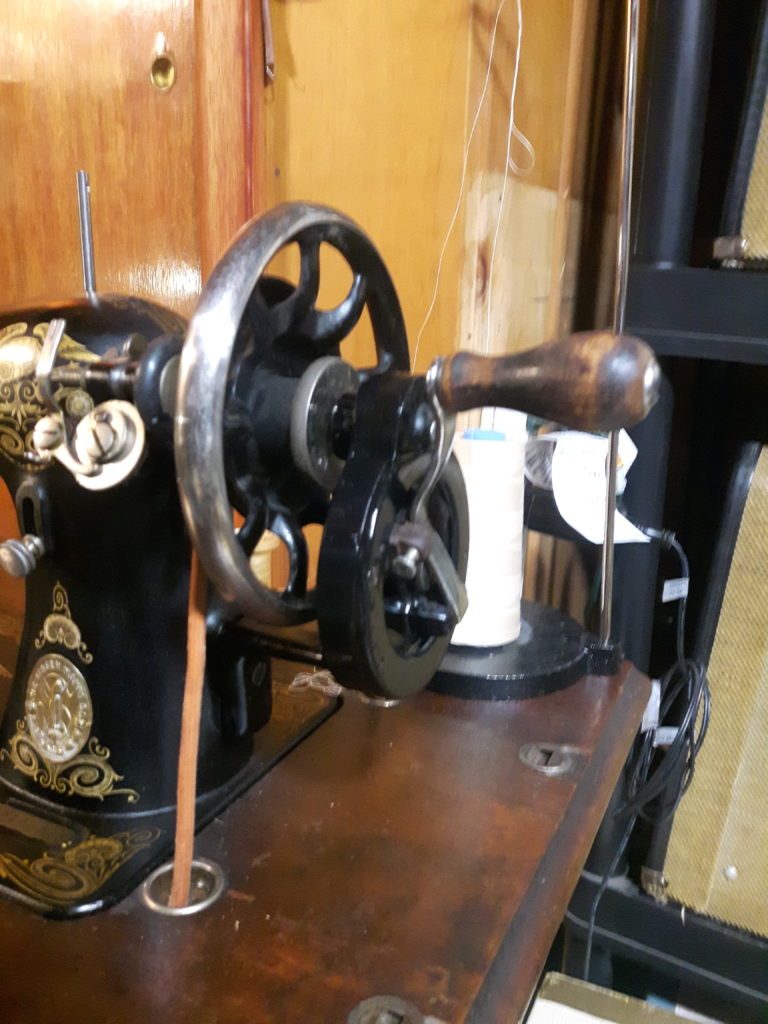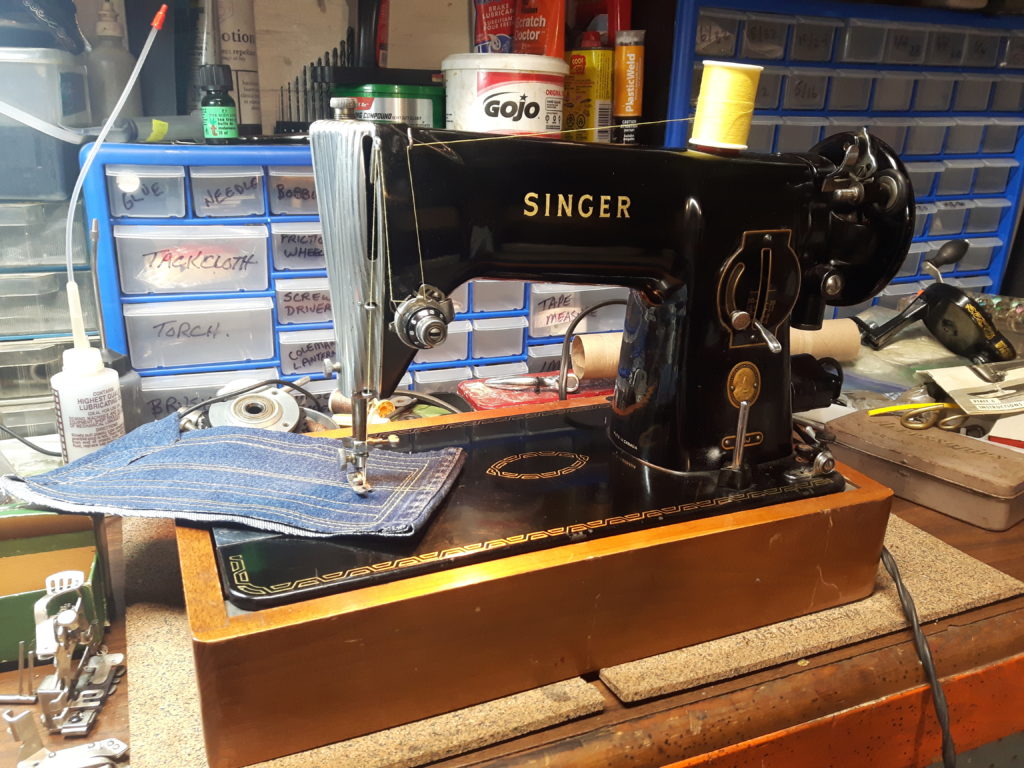
When the Singer 201 debuted in 1935 it was, and remains as the finest straight stitch machine they ever produced, although one might argue that the 301 was better by virtue of it being lighter and truly portable.
Produced in the United States and England for almost three decades it came in 4 variations; treadle (201-1), hand crank (201-4), motorized (201-3), and with a potted motor (202-2) and aside from the drive mechanism, they were all built to an incredible standard. There was also the model 1200 which was a commercial variant a much rarer variant produced in Germany (201D) and in Australia from parts sourced from the U.K.
Hand lapped bevel gears drive this rotary machine, and while many gear driven machines use grease, the 201 has a brilliant oiling system for all the moving parts. It is a total loss system where new oil flushes the old and there are oil cups under the main drive components to catch any overflow. the only place a 201 gets grease is in the motor tubes or cups.
It was the most expensive machine Singer offered and the base machine cost a few dollars more than a Singer 221, and with a cabinet the price could easily double to close to $300.00, which is over $3000.00 in today’s money. While the prices of the 221 have soared, the 201 can still be found for a very reasonable price unless it is an original hand crank as those always fetch a higher price.

When used in a treadle the Singer 201 is one of the smoothest and lightest running machines ever made, almost dead silent in operation.

Our 201k4 hand crank was made in 1949 and runs as sooth as a buttered kitten on glass.

In the 1950’s Singer redesigned a great number of their classic machines, and the 201 was no exception, except they were cast in aluminium instead of iron which made them lighter. Most often found in two tone brown, there is a rarer black variant.
The model endured until 1961 and was discontinued due to extremely high production costs, and a move by Singer and everyone else to produce multi stitch machines.

This 201-3 was manufactured in October of 1947 and is currently being serviced in our shop, although the external condition was excellent the hook assembly had surface rust so those parts had to be removed for cleaning and polishing. If there had been any pitting we would have replaced the parts as a compromised surface finish will negatively affect the stitch quality and performance of the machine.
If you have never experienced a 201 in person, this is an example of just how smoothly they run, and as this customers machine had a toothed replacement belt, it could have run even quieter with a v belt.
Still… astonishing machines.
Happy sewing.







